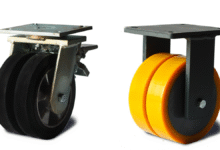UPS USPS SurePost Delivery Changes: What You Need to Know

UPS USPS SurePost delivery changes explained: Learn how recent updates are improving shipping times, tracking accuracy, and how it affects consumers and eCommerce businesses alike.
The shipping world has been shifting, and one of the biggest areas of change has been the evolution of hybrid services like UPS USPS SurePost. With more people shopping online and expecting faster, cheaper deliveries, companies are adjusting how packages make it from warehouses to your front door. UPS USPS SurePost, a service that blends the speed of UPS with the delivery reach of the USPS, has seen some major updates recently. If you’ve noticed changes in how your packages are arriving, or if you’re a small business owner trying to keep up with shipping logistics, you’re not alone.
This article breaks down the most important updates surrounding UPS USPS SurePost delivery changes in an easy-to-understand, casual tone while still giving you that expert-level insight. Whether you’re a consumer, an eCommerce entrepreneur, or just curious about how the mail gets to your door, this guide covers it all.
Understanding UPS USPS SurePost
UPS USPS SurePost is a service that combines the shipping network of UPS with the final delivery capabilities of the United States Postal Service. Essentially, UPS handles the package for most of its journey, and then USPS takes care of the final mile—getting it to your mailbox or doorstep. This setup is especially useful for residential deliveries and rural addresses where a private courier might not have the most efficient delivery routes.
SurePost was designed to offer a cheaper alternative to standard ground shipping while maintaining reliable delivery timelines. It’s most commonly used for non-urgent deliveries like online retail purchases, subscription boxes, and bulk shipments. It’s a cost-saving method that still ensures packages are delivered within a reasonable timeframe, usually just a day or two longer than standard UPS Ground.
Over the years, many businesses have leaned on SurePost to keep shipping costs down while still offering tracking and relatively predictable service. Customers often don’t even notice a difference—except when they’re paying less or when the USPS driver is the one dropping off their package.
Recent Changes to UPS USPS SurePost Delivery
The biggest shakeup in UPS USPS SurePost delivery has been how the final mile is being handled. As of late, UPS has started to reclaim control over more of these final deliveries. In other words, fewer packages are being handed off to USPS, and more are being delivered entirely by UPS.
This change stems from a few different factors. For one, USPS has been facing delays and capacity issues, especially during peak times like the holiday season. On the flip side, UPS has been expanding its own network and increasing its ability to handle more residential deliveries directly. This shift allows UPS to reduce handoff time and streamline the process, which can sometimes lead to faster deliveries.
Additionally, UPS has stated that bringing more of these deliveries in-house helps them better manage service quality and tracking accuracy. The more legs of the journey they control, the fewer chances there are for miscommunications or delayed updates. That’s good news for customers who like knowing exactly where their package is at all times.
Why the Change Matters
The move to reduce USPS involvement in SurePost deliveries has ripple effects across the board. For consumers, it can mean quicker delivery times and fewer complications when tracking packages. When UPS handles the full delivery, you get more consistent updates and fewer “handoff” gaps that sometimes occur when packages change hands.
For businesses, especially small eCommerce shops, these changes can be a game-changer. Shipping costs and delivery reliability are two of the most critical factors for customer satisfaction. If UPS can streamline SurePost and offer faster, more predictable delivery, businesses may find themselves fielding fewer “Where’s my package?” emails.
However, there’s also a downside. Some rural areas that are better served by USPS might see delays if UPS decides to reroute packages entirely through their own network. The USPS has long had an edge in reaching every address in the country, no matter how remote. UPS still relies on the postal service for some deliveries, but the shift may introduce inconsistencies in specific regions.
How It Affects Online Shoppers
If you’re an avid online shopper, you’ve probably used SurePost even if you didn’t realize it. One day your package comes with UPS, the next it’s in your mailbox thanks to USPS. With the latest delivery changes, you may start seeing more brown trucks outside your home instead of the local mail carrier.
One immediate benefit is better tracking. When UPS handles the full journey, their tracking system gives you real-time updates and more precise estimated delivery times. You’re also more likely to get a consistent delivery time of day—something that can be a little unpredictable with USPS.
But it’s not all upside. If you live in a neighborhood that typically gets mail earlier than UPS deliveries arrive, you might now receive packages later in the day. That could be inconvenient for some, especially for people who work late or are trying to retrieve packages before nightfall.
Impact on eCommerce Businesses
For online sellers and eCommerce entrepreneurs, the UPS USPS SurePost delivery changes are a mixed bag—though largely a positive one. The cost savings of SurePost are still there, but the added speed and reliability of UPS handling the whole delivery process are even more appealing.
One major benefit is fewer customer service headaches. When USPS handled the final mile, there could be gaps in communication, package scanning delays, or unexpected delays that were hard for businesses to explain. Now, with UPS taking more control, there’s less confusion. It’s easier to track down a missing package and communicate accurate ETAs to customers.
Also, platforms like Shopify, Amazon, and Etsy are all improving their integrations with UPS, making it easier to offer SurePost as a seamless option at checkout. And with UPS’s expanded network, many sellers can now deliver faster without raising shipping prices, which is always a win.
The Logistics Behind the Change
From a logistics perspective, the shift in how SurePost operates is all about efficiency. UPS has invested heavily in its delivery infrastructure, including new sorting centers, route optimization technology, and even weekend delivery capabilities. By managing more of the delivery pipeline, UPS can cut down on the back-and-forth and reduce delivery times.
The USPS, while still an essential partner, has been facing increased pressure due to budget constraints and staffing shortages. By relying less on USPS for the final delivery leg, UPS not only gains more control but also helps reduce strain on the postal system during peak periods.
Plus, with the rise in demand for weekend and same-day deliveries, UPS’s push toward handling SurePost deliveries entirely in-house puts them in a better position to compete with services like Amazon Prime and FedEx Ground Economy.
Comparing SurePost Before and After the Changes
To really grasp the impact of these delivery changes, it helps to look at how SurePost operated before versus how it functions now.
| Feature | Before Changes | After Changes |
|---|---|---|
| Final Mile Carrier | USPS | Mostly UPS |
| Tracking Updates | Split between UPS & USPS | Unified under UPS |
| Delivery Speed | Slightly slower | Faster in most areas |
| Rural Coverage | Strong with USPS | Varies by location |
| Weekend Deliveries | USPS dependent | UPS now includes weekends |
| Customer Support | Dual responsibility | Mostly UPS |
The takeaway? SurePost is evolving into a faster, more consistent service that gives UPS more direct control over the shipping process.
Common Complaints and Concerns

Despite the benefits, not everyone is thrilled with the delivery changes. Some customers in remote areas are reporting delays, especially where UPS’s own network doesn’t extend as far as USPS does. Others have noticed less predictability in delivery times or frustration over packages being delivered later in the day than usual.
Additionally, some business owners who rely on USPS’s low rural delivery costs worry that UPS might eventually raise prices as they take on more responsibility. While UPS has not made any major price hikes specific to SurePost, any future increases could affect margins for smaller retailers.
Another concern is confusion during the transition. Customers may not realize why their tracking now only shows UPS updates, or why packages are arriving at different times. UPS USPS SurePost Delivery Changes Clear communication from both UPS and businesses can help smooth this shift.
Tips for Adapting to the New SurePost Model
If you’re a business owner or just someone who frequently ships packages, there are a few ways to adapt to the new SurePost model:
- Use a multi-carrier shipping platform: Tools like ShipStation or Pirate Ship can help you compare rates and services easily.
- Communicate with customers: Let them know who will be delivering their package and when they can expect it.
- Adjust delivery expectations: Update your shipping policies to reflect faster or later delivery windows depending on your region.
- Track all packages from one dashboard: UPS tracking is now more accurate for SurePost, so stick with their portal.
- Leverage weekend delivery: If your customers need weekend delivery, highlight that SurePost now often includes Saturday and Sunday drop-offs.
What’s Next for SurePost?
The future of UPS USPS SurePost looks increasingly UPS-centric. With UPS continuing to grow its delivery network and optimize its technology, we’ll likely see them take over more of the delivery process entirely. However, USPS will still play an essential role in areas where they simply offer better coverage.
Expect more businesses to adopt SurePost now that it’s more efficient and faster. Consumers, too, will likely see fewer delays and better tracking. Overall, this is part of a broader trend in shipping: faster, cheaper, and more transparent deliveries.
FAQs About UPS USPS SurePost Delivery Changes
What is UPS USPS SurePost? SurePost is a hybrid shipping service where UPS handles most of the delivery, and USPS takes over for the final mile.
Why is UPS delivering more SurePost packages instead of USPS? UPS is trying to improve delivery speed and tracking by managing more of the process internally.
Will this make my packages arrive faster? In most cases, yes. UPS can often deliver faster than USPS, especially with improved routing and weekend services.
What happens if I live in a rural area? You may still receive deliveries via USPS if they provide better coverage in your area.
Will prices go up with these changes? So far, prices have remained stable, but there’s always a chance of future adjustments.
Can I still track my SurePost package? Yes. You can track it through UPS, and the updates are often more consistent now.
What should I do if my package is delayed? Reach out to UPS first, as they’re now managing most SurePost deliveries and can provide the latest info.
Conclusion: Embrace the Delivery Evolution
The world of shipping is always changing, and the updates to UPS USPS SurePost delivery are a clear example of that. With UPS taking the reins on more deliveries, customers can expect faster, more predictable service. While rural areas may still rely on USPS, the general trend is moving toward a more UPS-driven process.
For businesses and consumers alike, these changes are largely positive—offering better tracking, faster delivery, and more control. As eCommerce continues to grow, hybrid services like SurePost will play an even bigger role in keeping goods moving efficiently from sellers to doorsteps. Stay informed, adjust your expectations, and keep shipping smart.





